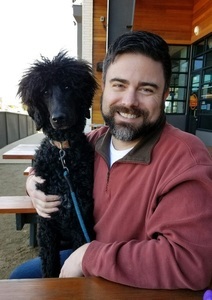18965603
Upper and Lower Motor Neuron Lesions
Descrição
Sem etiquetas
Quiz por Ben Williams, atualizado more than 1 year ago
Mais
Menos

|
Criado por Ben Williams
quase 5 anos atrás
|
|
Resumo de Recurso
Questão 1
Questão
[blank_start]Hypometria[blank_end] -- Underestimation of distance or range needed to accomplish a movement
[blank_start]Hypotonia[blank_end] -- Decrease in muscle tone
[blank_start]Asthenia[blank_end] -- Generalized muscle weakness
[blank_start]Nystagmus[blank_end] -- Rhythmic, quick oscillatory, back-and-forth movement of the eyes
[blank_start]Dyssynergia[blank_end] -- Movement performed in a sequence of component parts rather than as a single, smooth activity; decomposition
[blank_start]Rebound phenomenon[blank_end] -- Inability to halt forceful movements after resistive stimulus removed; patient unable to stop sudden limb motion
[blank_start]Dysdiachokinesia[blank_end] -- Impaired ability to perform rapid alternating movements
[blank_start]Dysarthria[blank_end] -- Disorder of the motor component of speech articulation
[blank_start]Asynergia[blank_end] -- Loss of ability to associate muscles together for complex movements
[blank_start]Hypermetria[blank_end] -- Overestimation of distance or range needed to accomplish a movement
[blank_start]Dysmetria[blank_end] -- Inability to judge the distance or range of a movement
Responda
-
Hypometria
-
Hypotonia
-
Asthenia
-
Nystagmus
-
Dyssynergia
-
Rebound phenomenon
-
Dysdiachokinesia
-
Dysarthria
-
Asynergia
-
Hypermetria
-
Dysmetria
Questão 2
Questão
Which of the following are examples of motor impairments caused by CEREBELLAR pathology?
Responda
-
Gait Ataxia
-
Dysarthria
-
Intention Tremor
-
Choreoathetosis
-
Akinesia
-
Nystagmus
-
Chorea
-
Rebound Phenomenon
-
Hyperkinesis
-
Asthenia
Questão 3
Questão
Which of the following are examples of motor impairments caused by CEREBELLAR pathology?
Responda
-
Dyssynergia
-
Intention Tremor
-
Bradykinesia
-
Dysdiachokinesia
-
Chorea
-
Gait Ataxia
-
Resting Tremor
-
Rebound Phenomenon
-
Dysmetria
-
Rigidity
Questão 4
Questão
Which of the following are examples of motor impairments caused by CEREBELLAR pathology?
Responda
-
Dysarthria
-
Dysdiachokinesia
-
Intention Tremor
-
Akinesia
-
Nystagmus
-
Rebound Phenomenon
-
Hemiballismus
-
Dystonia
-
Bradykinesia
-
Choreoathetosis
Questão 5
Questão
Which of the following are examples of motor impairments caused by BASAL GANGLIA pathology?
Responda
-
Dysarthria
-
Athetosis
-
Dysdiachokinesia
-
Bradykinesia
-
Dyssynergia
-
Dystonia
-
Akinesia
-
Hyperkinesis
-
Intention Tremor
-
Hemiballismus
Questão 6
Questão
Which of the following are examples of motor impairments caused by BASAL GANGLIA pathology?
Responda
-
Dystonia
-
Intention Tremor
-
Asthenia
-
Nystagmus
-
Rigidity
-
Dysdiachokinesia
-
Bradykinesia
-
Dysarthria
-
Dysmetria
-
Chorea
Questão 7
Questão
Which of the following are examples of motor impairments caused by BASAL GANGLIA pathology?
Responda
-
Hemiballismus
-
Rigidity
-
Dystonia
-
Hyperkinesis
-
Rebound Phenomenon
-
Choreoathetosis
-
Dysdiachokinesia
-
Athetosis
-
Gait Ataxia
-
Dysmetria
Questão 8
Questão
"A number of specific motor impairments that affect coordinated movement are associated with [blank_start]cerebellar[blank_end] pathology. Many of these impairments either directly or indirectly influence the patient's ability to execute accurate, smooth, controlled movements." -O'Sullivan 6th ed.
Responda
-
cerebellar
-
basal ganglia
Questão 9
Questão
"Patients with lesions of the [blank_start]basal ganglia[blank_end] typically demonstrate several characteristic motor deficits: 1.) poverty and slowness of movement, 2.) involuntary, extraneous movement, and 3.) alterations in posture and muscle tone." -O'Sullivan 6th ed.
Responda
-
basal ganglia
-
cerebellum
Questão 10
Questão
Which of the following are characteristic impairments of UMN lesions?
Responda
-
Hypertonia
-
Velocity dependent changes in muscle tone
-
Hyperreflexia
-
Muscle Spasms
-
Hypotonia
-
Non-Velocity dependent (i.e. Velocity-Independent) changes in muscle tone
-
Hyporeflexia
-
Fasciculations
Questão 11
Questão
Which of the following are characteristic impairments of LMN lesions?
Responda
-
Hypertonia
-
Velocity dependent changes in muscle tone
-
Hyperreflexia
-
Muscle Spasms
-
Hypotonia
-
Non-Velocity dependent (i.e. Velocity-Independent) changes in muscle tone
-
Hyporeflexia
-
Fasciculations
Questão 12
Questão
Which of the following are characteristic impairments of LMN lesions?
Responda
-
Ipsilateral Weakness or Paralysis, in all cases.
-
Weakness and Paralysis are always focal.
-
Neurogenic Atrophy
-
Ipsilateral Weakness or Paralysis, in some cases, but not all.
-
Bilateral Weakness or Paralysis, in some cases, but not all.
-
Contralateral Weakness or Paralysis, in some cases, but not all.
-
Weakness and Paralysis are always distributed, never focal.
-
Wide-spread Disuse Atrophy
Questão 13
Questão
Which of the following are characteristic impairments of UMN lesions?
Responda
-
Ipsilateral Weakness or Paralysis, in some cases, but not all.
-
Bilateral Weakness or Paralysis, in some cases, but not all.
-
Contralateral Weakness or Paralysis, in some cases, but not all.
-
Weakness and Paralysis are always distributed, never focal.
-
Wide-spread Disuse Atrophy
-
Ipsilateral Weakness or Paralysis, in all cases.
-
Weakness and Paralysis are always focal.
-
Neurogenic Atrophy
Questão 14
Questão
Sensation may be impaired by lesions in which of the following locations?
Responda
-
Cerebral Cortex - Corticospinal Tracts
-
Basal Ganglia
-
Cerebellum
-
Spinal Cord
Questão 15
Questão
Spasticity is common with lesions in which of the following locations?
Responda
-
Cerebral Cortex - Corticospinal Tracts
-
Basal Ganglia
-
Cerebellum
-
Spinal Cord
Questão 16
Questão
Rigidity is common with lesions in which of the following locations?
Responda
-
Cerebral Cortex - Corticospinal Tracts
-
Basal Ganglia
-
Cerebellum
-
Spinal Cord
Questão 17
Questão
Hyperreflexia is common with lesions in which of the following locations?
Responda
-
Cerebral Cortex - Corticospinal Tracts
-
Basal Ganglia
-
Cerebellum
-
Spinal Cord
Questão 18
Questão
Hyporeflexia may occur with lesions in which of the following locations?
Responda
-
Cerebral Cortex - Corticospinal Tracts
-
Basal Ganglia
-
Cerebellum
-
Spinal Cord
Questão 19
Questão
Disuse atrophy may occur with lesions in which of the following locations?
Responda
-
Cerebral Cortex - Corticospinal Tracts
-
Basal Ganglia
-
Cerebellum
-
Spinal Cord
Questão 20
Questão
Involuntary movements are NOT likely to occur with lesions in which of the following locations?
Responda
-
Cerebral Cortex - Corticospinal Tracts
-
Basal Ganglia
-
Cerebellum
-
Spinal Cord
Quer criar seus próprios Quizzes gratuitos com a GoConqr? Saiba mais.
